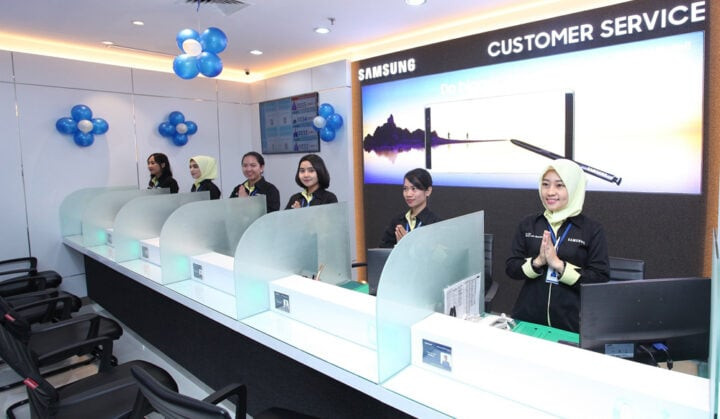Samsung stands as a titan in the smartphone industry, consistently holding the top vendor position worldwide. To meet the demands of shipping over 300 million devices annually, a vast and intricate manufacturing network is essential. You might wonder, with such a global presence, Where Are Samsung Phones Made? The answer isn’t as simple as pinpointing one country. Samsung operates manufacturing facilities across several countries, strategically located to serve different markets and optimize production efficiency. Importantly, regardless of the factory’s location, Samsung upholds a uniform global quality standard for all its devices.
Decoding the Manufacturing Locations of Samsung Galaxy Phones
While it’s a common assumption that China, the world’s manufacturing powerhouse, would be a primary location for Samsung phone production, the reality is more nuanced.
China: A Shift in Manufacturing Strategy
Despite China’s dominance in global manufacturing and being a key production hub for competitors like Apple, Samsung no longer manufactures smartphones in China. In a significant strategic shift, Samsung closed its last remaining smartphone factory in China in 2019. This decision came as Samsung’s market share in China dwindled to below 1%, making local manufacturing financially unsustainable. The closure of its Chinese factories reflects Samsung’s adaptation to changing market dynamics and its focus on more profitable manufacturing locations.
Vietnam: The Manufacturing Powerhouse
Currently, Vietnam is the primary manufacturing hub for Samsung phones. Located in the Thai Nguyen province, Samsung’s expansive complex houses two operational factories churning out a significant volume of smartphones, tablets, and wearable devices. To further bolster its production capacity, Samsung is in the process of expanding its Vietnamese operations with an additional factory. The existing facilities already boast an impressive output of 120 million units per year. A substantial portion of Samsung’s global supply, catering to major markets like North America and Europe, originates from its Vietnam-based production.
India: Serving a Lucrative Domestic Market and Beyond
 Samsung India Noida Factory
Samsung India Noida Factory
India is home to Samsung’s largest mobile factory globally, also recognized as the world’s largest mobile phone manufacturing unit based on production capacity. Demonstrating its commitment to the Indian market, Samsung invested $620 million in 2017 to double smartphone production in India, inaugurating the expanded factory in Noida, Uttar Pradesh, in 2018. This mega-factory matches Vietnam’s output with a production capacity of 120 million units annually.
The primary purpose of this massive Indian facility is to serve the burgeoning Indian smartphone market, one of the most crucial and competitive markets for Samsung. Local production is essential for Samsung to effectively compete on price against rivals due to India’s import taxes. While a large portion of the production caters to domestic demand, Samsung also leverages its Indian manufacturing to export smartphones, particularly Galaxy M and Galaxy A series models, to markets in Europe, Africa, and West Asia.
South Korea: The Home Base for High-End Production and Components
 Samsung Gumi Campus South Korea
Samsung Gumi Campus South Korea
Samsung maintains manufacturing operations in its home country, South Korea. These facilities play a crucial role in the production ecosystem, particularly for high-end devices and the manufacturing of key components sourced from Samsung’s affiliated companies. However, smartphone production in South Korea accounts for less than 10% of Samsung’s global shipments. The units manufactured in South Korea are primarily intended for the domestic market, reflecting a focus on serving local consumers with domestically produced devices.
Brazil: Supplying the Latin American Market
Samsung’s manufacturing footprint extends to Latin America with a factory in Brazil, established in 1999. This facility employs over 6,000 workers and serves as the primary supply source for Samsung smartphones across the entire Latin American region. Similar to India, high import taxes in Brazil necessitate local production to enable Samsung to offer its products at competitive prices within the Brazilian market and across Latin America.
Indonesia: Catering to Local Demand in Southeast Asia
 Samsung Indonesia Factory
Samsung Indonesia Factory
Indonesia is another Southeast Asian country where Samsung manufactures smartphones. Relatively recent, the Indonesian factory commenced operations in 2015 with a production capacity of approximately 800,000 units per year. This facility is strategically sized to meet the demands of the Indonesian market, ensuring local consumers have access to Samsung devices produced within the country.
The Evolving Landscape of Samsung’s Manufacturing Priorities
The smartphone industry has undergone a dramatic transformation in the last decade, largely driven by the rise of highly competitive Chinese smartphone manufacturers across all market segments. This intensified competition has compelled Samsung to adapt and refine its manufacturing strategies.
One significant shift is Samsung’s adoption of the Original Design Manufacturer (ODM) model. In 2019, Samsung launched its first ODM smartphone, the Galaxy A6s, initially for the Chinese market. In this model, third-party manufacturers design and produce devices for Samsung, allowing Samsung to optimize costs, particularly in the more affordable smartphone segments. Industry projections suggest Samsung is poised to ship as many as 60 million ODM smartphones in the near future, extending this strategy to markets worldwide.
This increasing reliance on the ODM model signals a potential change in Samsung’s utilization of its own factory production capacity. Unless the overall smartphone market experiences substantial growth and Samsung can significantly increase its market share, a greater shift towards ODM could mean Samsung’s own factories might operate below their full production potential.
Dispelling Myths: “Original” Samsung Phones and Manufacturing Location
Misconceptions often arise regarding the “originality” of Samsung phones based on their country of manufacture. The internet, unfortunately, can be a breeding ground for misinformation. To clarify, all Samsung phones produced in Samsung’s own factories or by its ODM partners are genuinely “original” Samsung products. Whether a phone is manufactured in South Korea, Vietnam, Brazil, or Indonesia, it adheres to the same rigorous standards. A Samsung phone from Vietnam is not inherently superior or inferior to one from Indonesia.
The key is that these factories primarily function as assembly plants. They all receive identical components and adhere to Samsung’s standardized manufacturing and quality control processes. Therefore, consumers should not be concerned about the authenticity or quality of their Samsung phone based solely on its manufacturing origin. The only exception would be obvious counterfeit devices, easily identifiable by misspellings or blatant branding errors – those represent a separate issue altogether.
In conclusion, Samsung’s global manufacturing network is a sophisticated web of factories strategically located worldwide. While Vietnam currently stands as the primary production hub, facilities in India, South Korea, Brazil, and Indonesia also play crucial roles in serving regional markets and ensuring Samsung’s global reach. Regardless of where your Samsung phone is made, you can be assured it meets Samsung’s stringent quality standards, delivering the innovation and reliability expected from a global leader in mobile technology.

